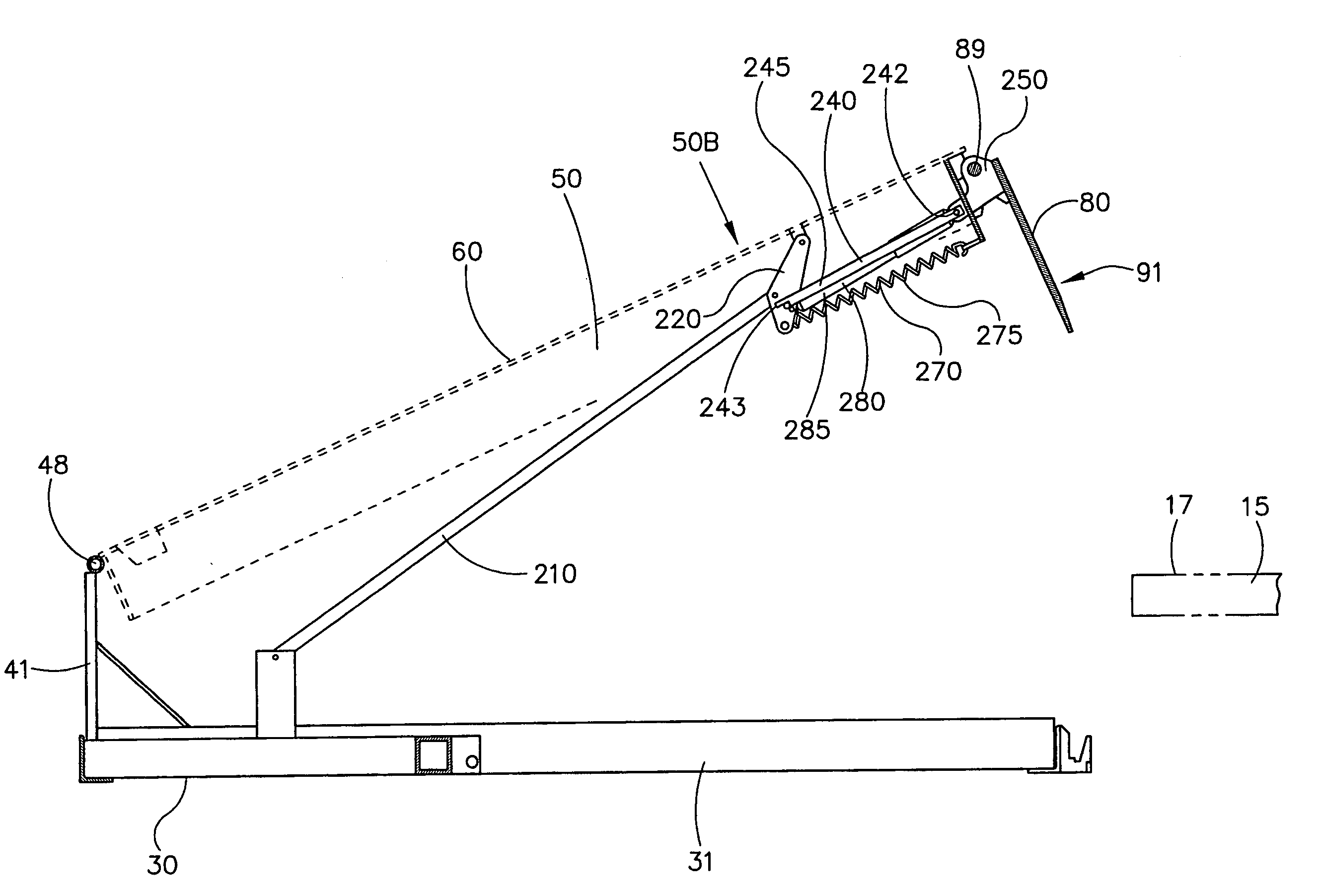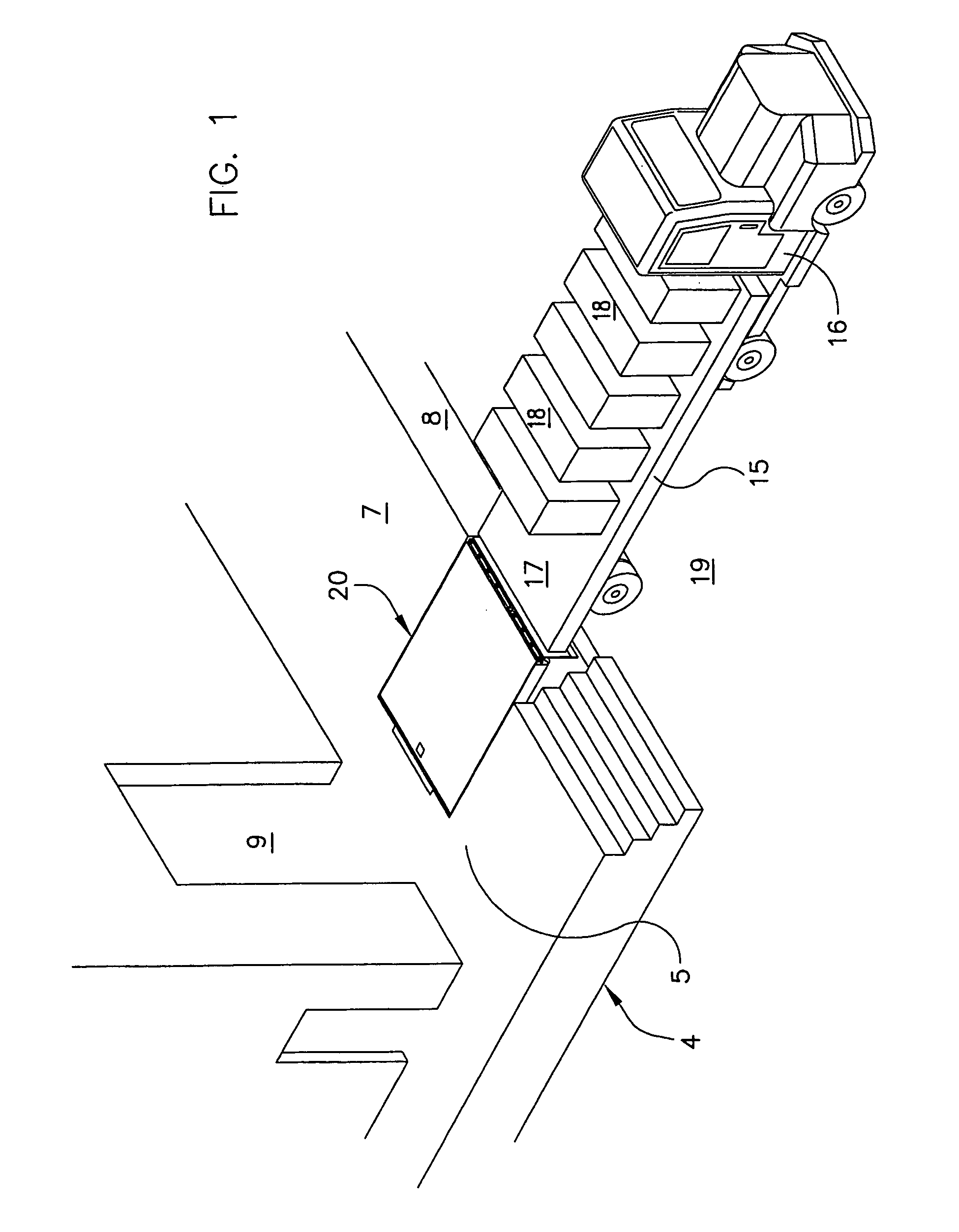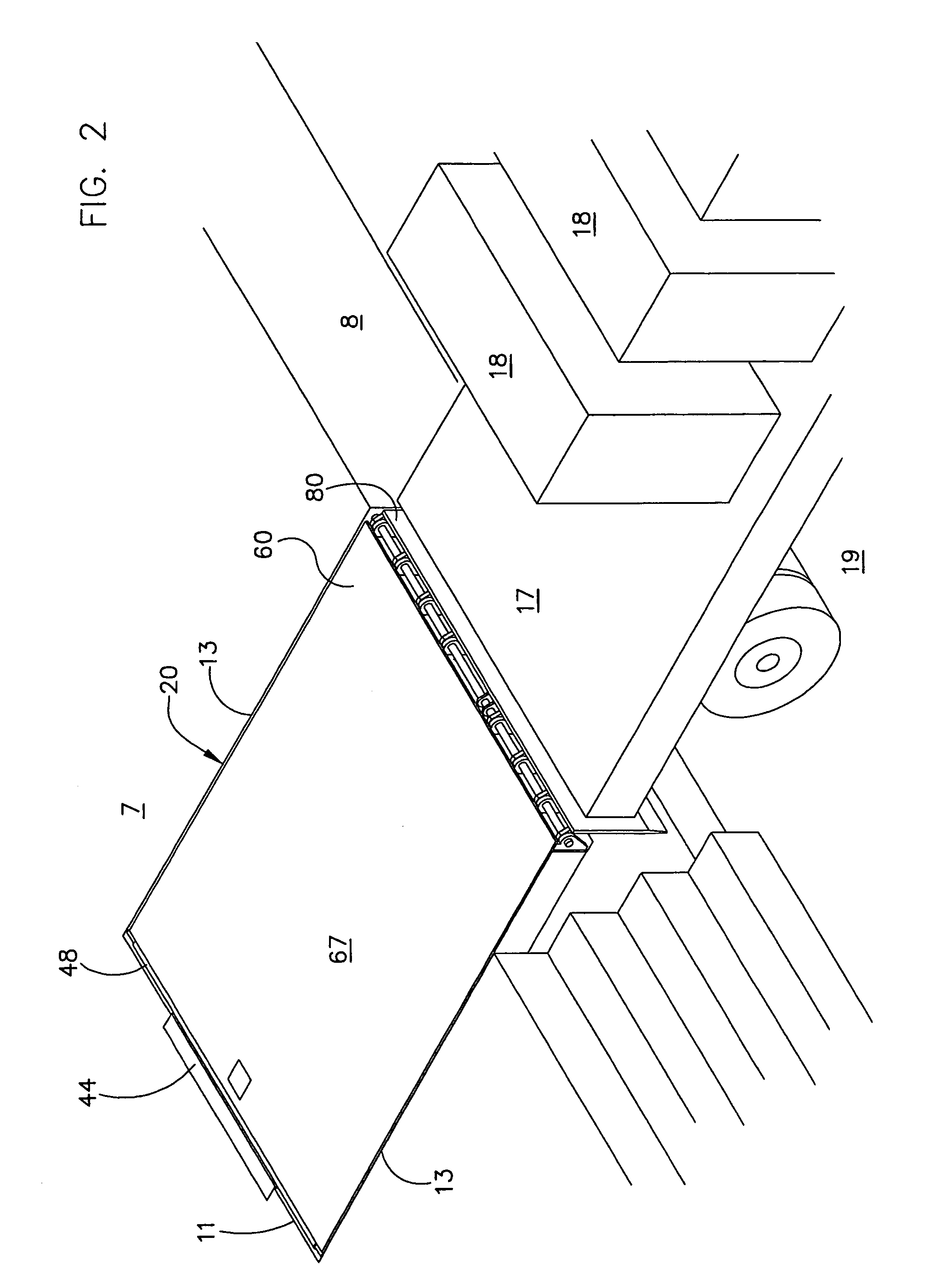Dock leveler
a leveler and dock technology, applied in the field of dock levelers, can solve the problems of slipping too easily or holding too tightly, the hold down device does not properly allow the deck, and the design has inherent flaws
- Summary
- Abstract
- Description
- Claims
- Application Information
AI Technical Summary
Benefits of technology
Problems solved by technology
Method used
Image
Examples
Embodiment Construction
[0044]While this invention is susceptible of embodiment in many different forms, the drawings show and the specification describes in detail a preferred embodiment of the invention. It should be understood that the drawings and specification are to be considered an exemplification of the principles of the invention. They are not intended to limit the broad aspects of the invention to the embodiment illustrated.
[0045]FIG. 1 shows a building or structure 4 with a loading dock 5. The loading dock 5 has a generally flat, horizontal, elevated floor surface 7 and a generally vertical front wall 8. The building 4 has a doorway 9 with an overhead door (not shown). The loading dock 5 has a pit 10 of sufficient depth to house a dock leveler. The pit 10 has a rear wall or surface 11, a bottom floor or surface 12, opposed sidewalls or surfaces 13, and an open front. The floor 12 of the pit 10 is generally horizontal or slightly sloped for drainage, and is spaced a desired distance from the floo...
PUM
 Login to View More
Login to View More Abstract
Description
Claims
Application Information
 Login to View More
Login to View More - R&D
- Intellectual Property
- Life Sciences
- Materials
- Tech Scout
- Unparalleled Data Quality
- Higher Quality Content
- 60% Fewer Hallucinations
Browse by: Latest US Patents, China's latest patents, Technical Efficacy Thesaurus, Application Domain, Technology Topic, Popular Technical Reports.
© 2025 PatSnap. All rights reserved.Legal|Privacy policy|Modern Slavery Act Transparency Statement|Sitemap|About US| Contact US: help@patsnap.com



